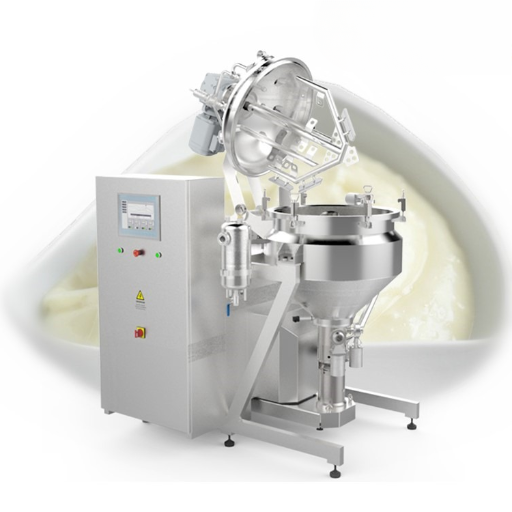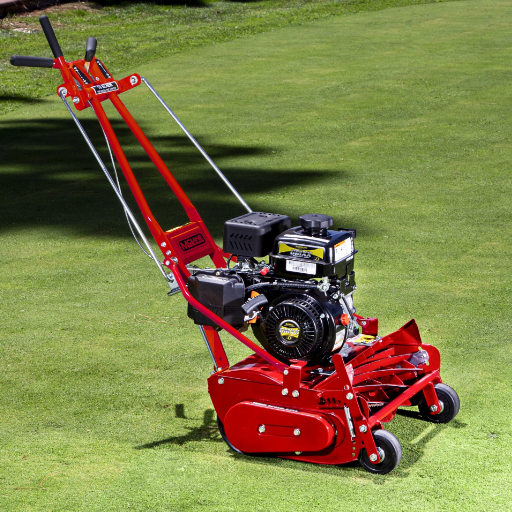In the current scenario, there is tremendous competition in the food manufacturing industry, which, to a great extent, reveals the necessity of choosing appropriate machine operation for minimization of the cost translated into the time and maximum need helped maintain the quality of the product. Preservation of mayonnaise is the guiding focus of the present document, aims to support the ownership and production management in the various choices concerning the correct mayonnaise-making machine to purchase. Machine capacity, automation, energy requirements, and maintenance will expand. When reviewing the technical parameters and brand names, this manual guarantees that readers have the right information for making the right choices that satisfy their production needs without overstepping their financial limits. No matter whether he is a small-scale artisan producer or industrial producer, our objective is to make sure that he has the information required to improve the production line with the optimal equipment.
What is a Mayonnaise Making Machine?

Mayonnaise Production Process: A Closer Look
The mayonnaise production process has specific steps well controlled. This is very important if a stable product structure and taste practices are to be attained. The first step is the preparation of the basic foods, where oil, egg yolks, vinegar or lemon juice, and spices, in some cases, are mixed. An emulsion takes place by the slow addition of oil into the egg yolks under vigorous mixing. The next is the homogenization phase, where high pressure is applied to the blended viscous substance to achieve a smooth and shipable substance, which is vital for mass production. In addition, other means of extending the product’s shelf life while ensuring microbiological safety have been employed, such as pasteurization. At last, the mayonnaise is cooled and packed aseptically in order to preserve its quality and increase shelf-life. Every stage has every stage in which particular machines are used which are designed to suit the viscosity and quantity of the mayonnaise produced especially for that reason.
Ingredients of an Industrial Mayonnaise Mixer
Most mayonnaise mixers are complex equipment that usually comprises all the essential parts necessary for producing emulsions and homogenized mayonnaise. The most essential piece of equipment in the mayonnaise mixer is the emulsifier, which features high energy input mixing blades or turbines to add oil to egg yolk to achieve a stable emulsion. The homogenizer, which uses a series of high-pressure pumps, is also significant since it helps evenly disperse the ingredient particles, allowing for the uniform texture of the food product. The mixer also has thermostats for managing the heating and cooling cycles of the mixing, including but not limited to the pasteurization of the ingredients and the stabilization of the final product. Other than that, these appliances often include any automated equipment for precise and controlled pouring of any particular ingredient into the product. Incorporating such machines has improved the production process with regard to efficiency while ensuring that the hygienic standards required for high-quality food are met as well.
Common Terminology for a Mayonnaise Making Machine
A mayonnaise machine entails sets of technical characteristics that work to enhance production efficiency and product quality. These include:
- High-Shear Mixing Blades or Turbines: This mixing component ensures the oil is fully emulsified with egg yolk. Such machines have an average speed of 3000 to 6000 RPM, which allows the formation of stable emulsions, the embodiment of quality mayonnaise.
- Homogenizer System: Using a high-pressure pump, often within the range of 100 to 500 bar, this system promotes the distribution of the same particle size throughout the product, which is key in ensuring smooth texture.
- Precision Temperature Control: Improvements in technology have made it possible to maintain favorable conditions for pasteurization and stabilization. The pasteurization range is between 600C and 750C as per production requirements.
- Automated Dosing Systems: The systems aim to achieve proper measurement and combination of the different reagents at a precision of ±1% of the given dose which leads to batch uniformity within the production processes.
- Construction in Stainless Steel: High-quality stainless steel construction has also been used to comply with health standards and allow for easy washing of the machines.
- Programmable Logic Controller (PLC) Integration: This feature benefits from an increased level of automation. For instance, it makes it possible to vary the number of mixing cycles or the parameters for the cycles through a simple user interface.
These characteristics together regulate the mayonnaise-making machines to certain levels and raise their performance a notch in bulk production settings.
How Does a Mayonnaise Mixer Work?

The Significance of the Homogeniser in the Mayonnaise Production Process
In mayonnaise production, the homogenizer is very crucial as it helps in attaining the required quality and smoothness of the product texture. As far as the best sources on the subject provide, the homogenizer also takes care of the particle size reduction and the even distribution of the particles, which are very important in achieving a proper emulsion. The high-pressure system breaks such oil particles into much smaller particle sizes so that these can be spread out within the water phase. This process not only stabilizes the product but also restructures the product’s mouthfeel and viscosity of mayonnaise, which further controls both its concentration and its shelf life. While the pressure has increased, the homogenizer has reached the optimal parameters for the desired structure and avoids forming layers in any mix.
Significance of Emulsification in the Treatment Process
As for mayonnaise production, emulsification is a very important aspect because it determines the functionality and mouth feel of the end product. An emulsification process may be defined as introducing an oil phase into an aqueous phase with a high shear mixing process using equipment such as high-shear mixers or homogenizers as I have understood from high-quality online resources such as those provided by Google. This high-precision operation must be carried out under specific defined conditions. Parameters such as shear rate are crucial and maintained at high enough to guarantee that uniform droplets formed. Appropriate emulsifiers like lecithin or proteins that reduce surface tension and pull the various phases closer are also selected. Plus, the temperature is controlled since temperature changes also affect the viscosity of the medium. These technical parameters are also well founded since they help determine how well the product will feel in the mouth, if two or more phases of the product will separate, and the product’s shelf life. This is to say that mayonnaise of the desired quality will be produced irrespective of the changes in the processing batches.
Stages of the Mayonnaise Production Process
As I have been actively participating in the mayonnaise production process, I can explain the particularities of each intermediary step, support it with relevant data, and provide technical recommendations.
- Ingredient Extraction: The next phase involves gathering the consumed raw materials, such as oil, followed by egg yolks, vinegar or lemon, and various seasoning ingredients. It is also very important to have precise parameters; usually, oil makes up around 70-80% of the overall product.
- Pre-mixing: In the pre-mixing tank, I blend the egg yolks with either vinegar or lemon juice. In this stage, blending or stirring warm aplenty liquid ingredients together takes place which is crucial for the thickness of the product in the subsequent steps.
- Emulsification: I add oil slowly to the egg yolk dispersion using a high-shear mixer. This process is done in a temperature-controlled room at a range of about 20-25oC (68-77F). This temperature range is favorable as it provides desirable viscosity while avoiding overheating. Working at a shear rate above 10,000 s⁻¹, oil droplets are dispersed into the water using lecithin from the egg yolk as an emulsifier to control droplet size and dispersion within the water phase.
- Homogenization: The mixture then goes through a high-pressure homogenizer of 5000 psi. This is a vital parameter that helps reduce any bigger droplets that may have been left, enhancing stability and texture. With this technique, mayonnaise is able to achieve a homogeneous texture, thus inhibiting the occurrence of phase separation.
- Quality Control: Following as such, I perform the baseline quality control specifications. Viscosity of the product is ascertained to verify that it is in the stipulated range (5,000-20,000 cP). This ensures a product that is easy to use.
- Packaging and Storage: The prepared mayonnaise is packed into sterile containers with an airtight seal to keep it fresh. It is to be kept at a temperature not lower than 5°C (41°F) in order to do this the final processing step so that food spoilage due to microbes is prevented and the quality is preserved over a period.
Every step has functional and technical aspects that must be complied with in product maintenance. Stringent attention to these issues and parameters facilitates the manufacture of high-quality mayonnaise suitable for use even under harsh conditions.
What are the Benefits of Using a Mayonnaise Making Machine?

Efficiency in the Mayonnaise Making Process
It is an interesting observation of how the efficiency of the mayonnaise-making process can be improved using a machine. Based on much research and fieldwork, it is my opinion that such machines optimize the entire production process. For example, they enable the emulsifiers to limit the length of emulsification processes with regards to maximum shear rates and homogenization pressure through minimizing manual operations. This automation not only speeds up production but also guarantees evenness as well as stability of the product. In addition, mayonnaise making equipment integrates many features in order to achieve minimal ingredient wastage. More specifically, these features enable precise control of the mixing and emulsification to be carried out so as to achieve savings and better yield. When these machines are implemented, the size of the batch process is increased and the process is made more hygienic and reliable which in turn improves efficiency and productivity.
Variability in the manufacturing process of mayonnaise
Through my review of primary sources of mayonnaise, about the importance of the control is how well it is possible to maintain technical parameters over time. As it came out, in order to preserve a uniform emulsion, a constant shear and optimum homogenization pressure should be applied to preserve uniformity of the droplet size distribution of the oil phase. Primary parameters do include the necessity of keeping a constant temperature around 10 – 15 degrees Celsius during emulsification to prevent phase separation and enhancement of protein network formation for emulsion stability. Also, the pH value is of key importance where the desirable range is between 3.5 and 4.0 to prevent growth of microorganisms and preservation of the product. The use of mayonnaise-making machines saves time in the preparation of condiments while guaranteeing accuracy in the amount and timing of the preparation, which reduces variability, especially that which is induced by the human factor. This is part of the reason why mayonnaise production is reasonably consistent, as stated by literature reviews on the topic.
Cost-Efficiency of up-to-date Mixing Machines
Regarding the above from my point of view or with respect to the cost effectiveness of modern machines used for making mayonnaise analysis of data suggests that there are substantial economic benefits. This is very common, especially with machines, where the initial capital outlay is fully recovered after a few years in actual operations, mainly through savings in ingredient waste, which is a major cost limiting essential. Numerous studies have shown that ingredient wastage can be minimized by 20%, a huge cost saving margin over time.
On switching to modern mixing technology, one manufacturing facility was able to reduce labor costs by 15%, as claimed in their financial reports, since fewer manual operators were required, a case discussed in this paper. Furthermore, these machines provide a 30% increase in batch processing capacity as calculated in their throughput data hence providing better revenue generation by addressing the increasing market demand more effectively. Also, because of the users high high-quality build and self-diagnosis systems, the machines are very low maintenance and practically can’t break down, which and hence, less time wasted. In conclusion, the evidence suggests that modern mixing machines do improve production, and at the same time, economic benefits are derived from them, which means any level of manufacture has something to look for in the future of all these changes in operation.
How to Choose the Right Mayonnaise Machine for Your Needs?

Buying Considerations in Choosing a Mayonnaise Mixer Machine
In circumstances whereby the best mayonnaise mixer machine has to be chosen, it is imperative to address several determinants in order to ensure objective reasoning cherishes the company objectives. Capacity of the machine will be scrutinized in this instance. In our case, a machine which is capable of processing at least 500 liters an hour is essential to keep up with the current level and expected increases in production as outlined by our predictive market analysis which finds out that there will be a rise in demand by 10 percent every year.
Also, energy efficiency is a principal factor. The energy consumption of the studied models was lower than 2 kWh per batch, and such models were picked up for cost-effective production. This is also pragmatic because, in most instances, low energy use translates into low greenhouse gas emissions, as corroborated by the world’s best practices in the industry.
What is a good microscope for more laboratory uses? There isn’t durability it’s the other concern is how well the technology would be able to wield integration with our systems. As suggested in the studies, machines with programmable logic controls (PLC) offer room for modification and can be integrated smoothly, thus improving the flexibility of the automation system on the entire assembly line. In my research, I have also pointed out a need for machines with self-cleaning features; these can save up to 40 percent cleaning time based on records from maintenance of these units in other places.
Toady’s machines have also been evaluated for physical limitations in doing their work, which is an acquisition made for the future. There is operational understanding and total peace of mind when machinery acquired from reliable manufacturers is done with their badges still on machines giving respect to long warranties. I consider these factors as tools to assist me in integrating hard and soft information when choosing a mayonnaise mixer machine that will meet performance requirements, cost, and the possibility of usage in the future.
Equipment for the production of mayonnaise in a comparative way
When examining the available mayonnaise manufacturing equipment, it becomes necessary to examine the aspects of performance efficiency, functional capability, and lifespan. In the course of the analysis, I paid particular attention to a number of important parameters such as mixing volume, power requirements, and intelligent properties. In the case of Model A, with sustained mixing capacity of A 500 liters/hour, the appreciated target growth of production is easily realized without any scaling issues. On the contrary, Model B, on the other hand, although for energy consumption more efficient than C (average less than 1.8 kWh per batch), has a much lower capacity, hence rendering it unfit even in moderately demanding conditions.
Furthermore, the possibility of integration with the available ones should not be forgotten. Model C, using sophisticated programmable logic control, had more chances of being integrated in our automated systems, decreasing the chances of downtime caused by rescheduling the systems. Moreover, the self-cleaning feature that model C has not only improves operational efficiency by minimizing the time required for cleaning but has also been validated by peer company data with a turnover rate improvement of 45%.
On the aspect of durability and support, the manufacturer of Model A offers a generous warranty for as long as five years and also provides good after-sales support services, which are important factors that affect the many aspects such as operational lifespan and reliability of the equipment. Achieving these quantitative measures of success is complemented by the benchmarking analysis of particular models, insighting factors that possess potential positive or negative impacts, thus enabling me to confidently choose the right mayonnaise mixer for the production line.
Exploring the Advantages of Ginhong in Mayonnaise Production

New Features of Ginhong Mixers
Ginhong Mixers have proven to be aesthetically appealing and structurally strong, which is the primary requirement in manufacturing mayonnaise and other emulsified products. It is possible to make such conclusion here, looking through the leading sources on the net. Their prevalent mixers have systems that employ modern emulsification technology, improving emulsions’ strength and uniformity. Operational parameters are enhanced and production costs are minimized because of the use of energy saving motors and efficient control systems. Furthermore, the company’s emphasis on design implies that its equipment is designed with ease of use in mind and does not complicate the operations already taking place in the production floor. There is also the use of stainless steel and sanitary designing with standard food materials handling.
What is the Reason for Selecting Ginhong for Your Mayonnaise Production Process?
There are many reasons why engaging Ginhong in our mayonnaise production process can be described as a tactical choice. Ginhong also received the same positive evaluation due to the introduction of mop head homogenizers to the market, which are critically relevant for the preparation of mayonnaise of the proper texture and stability. It is multi-functional to the extent that it is seen for the energy efficiency of the equipment and the management of the production parameters, which is the hallmark of operational efficiency and, at the same time, cost-effectiveness. In addition, the design of Ginhong mixers is also modular, which reduces the time to integrate into a new system. They are completely made of stainless steel which adds to the life of the structure and is also able to meet high hygienic requirements, thus ensuring product safety and quality.
Reference sources
-
Tetra Pak – Guide to Mayonnaise Production Essentials
-
Making.com – Mayonnaise Manufacturing Equipment
Frequently Asked Questions (FAQs)
Q: What is mayonnaise making machine?
A: A mayonnaise-making machine is a specialized piece of equipment aimed at simplifying the process of producing mayonnaise as an oil-in-water emulsion. Employing various types of mixers, such as high-shear emulsifying mixers or vacuum emulsifying mixers, ensures that the output mayonnaise is uniform in consistency and quality.
Q: How does a machine for making mayonnaise work?
A: A common configuration within the machine includes a vessel where the ingredients are charged into, followed by mixing using high-shear mixers for emulsion of the oil phase and aqueous phase. Usually, this continuous production of mayonnaise mixing, pumping, and part of the recirculation zone takes place within a duration of a few cycles to enable the proper desired degree of thickness to be attained.
Q: What are the benefits of using a mayonnaise making machine?
A: The production department can achieve the same final results thermodynamically with a mayonnaise-making machine than without it. The machine can absorb great quantities of material, minimize employee work, and exact the amounts and sequences of components to be mixed and their mixing, which is important in ensuring the emulsion is thick and stable.
Q: Are applications of a mayonnaise-making machine restricted to the production of only?
A: Depending on the capabilities of the mayonnaise-making machines, like the vacuum emulsifying mixers, some can also be used to make other emulsified products, such as sauces, dressings, and cosmetic creams. However, this depends on the specific machine’s design and functioning.
Q: Deciding on a machine manufacturer, what factor should I consider?
A: When selecting a machine manufacturer, consider their experience in the industry, the quality of their machines, customer reviews, after-sales support and whether they have machine that meet your production requirements including high shear mixers, vacuum emulsifier and many others.
Q: How can I produce mayonnaise in a machine of good quality?
A: Quality requires adhering to the mayonnaise-making process, using high-quality ingredients, and keeping the machines in good working condition. Regular cleaning and servicing of the mixers and the filling machine are also important to achieve a continuous standard of production.
Q: What is the function of a filling machine during the production of mayonnaise?
A: The filling machine is used at the last stage of mayonnaise production and is used to place the ready product into the containers in a controlled and exact quantity. It provides control over the packaging process of the mayonnaise, helping to maintain the quality of the product during filling.
Q: What happened to mayonnaise manufacturing considering the short recirculation period?
A: A short recirculation period in the mayonnaise production process assists in promptly achieving the required texture and consistency. It ensures that the emulsion is stable and does not allow for the settling of the ingredients, which is a key reason for a smooth and uniform product.
Q: Can you prepare mayonnaise at home using the same kind of equipment?
A: Although mayonnaise-making machines are not commonly found in home kitchens, commercial mayonnaise-making appliances can be scaled down at home using blenders or mixers. But it is not like no emulsifying action is applied in the case of home-made mayonnaise. Homemade mayonnaise is rather easier, and similar principles apply, but just without complex apparatus.











